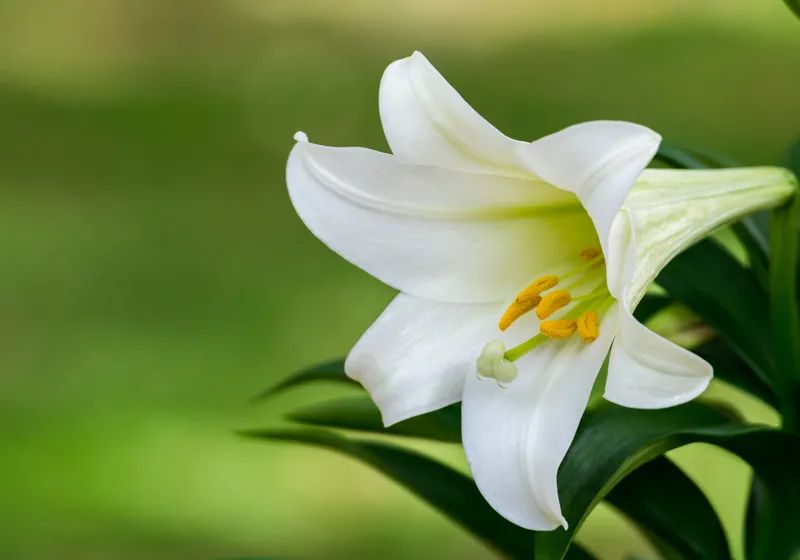
Sound the trumpet for Spring
How to enjoy Easter Lily season and keep these fragrant flowers blossoming
By GAINAN'S FLOWERS
Nothing announces that spring is here as well as the bright white trumpet flowers of the Easter lily. Standing for purity, virtue and innocence, the traditional Easter lily boasts several four-to-six-inch fragrant blooms on top of a eighteen to thirty inch leafy green stem.
Here are a few quick tips to keep your lily blooming:
- Display your plant in bright, but indirect sunlight.
- Protect your Easter Lily from drafts and heat sources, such as fireplaces, heaters and appliances.
- Remove the yellow anthers from the flower centers. This helps prolong the life of the blossoms and prevents the pollen on the anthers from staining the flowers, your hands, clothing, tablecloths, rugs and anything else it can find its way to.
- Cool daytime temperatures in the 60-65 degrees F range will prolong the life of the blooms. The temperature can be even cooler at night.
- Water the Easter Lily only when the soil becomes dry to the touch and don’t leave it dry for an extended period of time.
- If the lily’s pot is in a decorative container, be sure water is not accumulating under the pot. More plants die from over-watering than under-watering.
- Remove flowers as they fade and wither.
After May 15th, you can transplant your lily to an area in your yard that gets approximately 6 hours of sun per day. A little shade is fine. If it's planted in an area that gets less than 6 hours of sun, the plant will grow larger, and it may not bloom.
To plant, remove the plant from the container and loosen the root system. There will be some torn roots but don’t panic. It’s better for the plant to have a less compact root system.
Plant the bulb a few inches deeper than it was in the container and cover with soil. Water thoroughly and fertilize as you would other garden plantings. Soon after planting, the old top will wither and die. Again, don’t panic! New shoots will soon emerge that may flower in July or August.
Some gardeners have good results when overwintering lilies although they are not reliably hardy. To improve your chances for overwintering success, cover the plants with at least 4” of mulch in the fall or dig up the bulb and store indoors in the same fashion as other tender bulbs.









